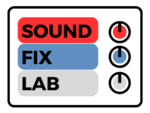Mastering is the final step in the music production process that takes your mix to the next level, ensuring it sounds polished, balanced, and ready for distribution. In this tutorial, we will explore ten essential steps to help you master a song like a pro. From setting up your mastering environment to adding the final touches, we’ll cover everything you need to know to achieve a professional-sounding master.
Step 1: Set up your mastering environment
To begin, create a dedicated space for mastering with proper acoustic treatment. Invest in high-quality studio monitors, headphones, and audio interfaces to ensure accurate monitoring and playback.
Step 2: Prepare your mix
Before diving into mastering, ensure your mix is well-balanced. Address any issues such as excessive frequencies, dynamics, or panning inconsistencies. Take the time to fine-tune your mix before proceeding.
Step 3: Optimize your mix bus
Apply gentle processing to your mix bus to enhance its overall sound. Use equalization, compression, and subtle saturation to add cohesion and glue the mix together.
Step 4: Address frequency balance
Use equalization to shape the tonal balance of your song. Pay close attention to the low-end, midrange, and high-frequency areas, making subtle adjustments to achieve a pleasing balance.
Step 5: Control dynamics
Utilize multiband compression or dynamic equalization to control dynamics and ensure a consistent volume throughout the song. Be cautious not to over-compress, as it can result in a lifeless mix.
Step 6: Enhance stereo width
Experiment with stereo imaging techniques to widen the mix and create a sense of spaciousness. However, be mindful of mono compatibility and phase issues that may arise from excessive stereo widening.
Step 7: Apply harmonic excitement
Add harmonic richness and excitement to your mix using techniques like saturation, harmonic enhancers, or tape emulation plugins. These tools can add warmth and character to your master.
Step 8: Fine-tune dynamics with automation
Utilize automation to make subtle adjustments to the track’s volume, panning, or effects. This step allows you to emphasize important elements in the mix and create dynamic interest.
Step 9: Add final touches
Apply subtle effects like reverb, delay, or stereo enhancement to add depth and dimension to your master. However, exercise restraint to maintain the clarity and focus of the song.
Step 10: Check the final master
Comparing your master with professionally mixed and mastered tracks is crucial. Pay attention to the overall loudness, tonal balance, and dynamics. Make any necessary adjustments to achieve a competitive and commercially appealing sound.
Mastering is a critical step in music production that can elevate your mix to professional standards. By following these ten steps, you’ll be equipped to master your songs with confidence. Remember, mastering is both an art and a science, so trust your ears and experiment with different techniques. Additionally, consider seeking the expertise of a professional mastering engineer for further guidance and to ensure the best possible outcome for your music. With practice and perseverance, you’ll achieve impressive results and create masters that captivate listeners and stand out in the music industry.




